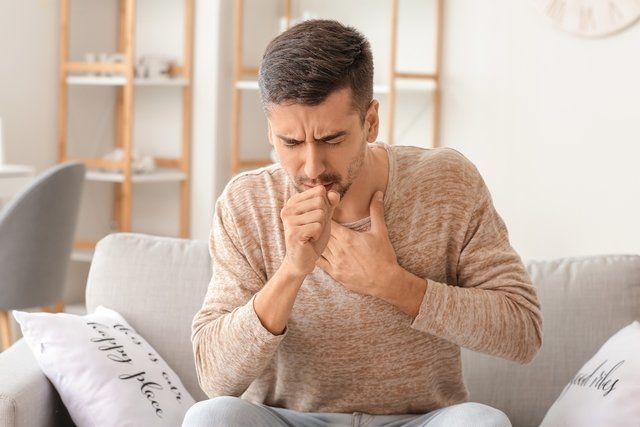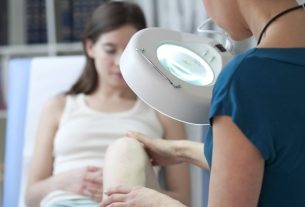Treatment for pneumonia must be carried out under the supervision of a general practitioner or a pulmonologist and is indicated according to the infectious agent responsible for the pneumonia, and is normally started in the hospital to prevent the progression of the disease and transmission to other people.
In cases where pneumonia is caused by a virus, the body can usually eliminate it naturally, without the need for medication. Therefore, if viral pneumonia is confirmed, the doctor may recommend basic care, such as resting or taking expectorants and fever medication, for example.
On the other hand, when pneumonia is caused by bacteria, treatment must be carried out with the use of antibiotics, as the organism cannot eliminate the microorganism on its own, in addition to there being a risk of spreading the bacteria to other parts of the body, which leaves the most serious pneumonia. In these cases, the patient is usually requested to be hospitalized so that antibiotic treatment can be started directly into the vein before going home.

Home treatment
At home, it is very important to follow all the instructions, using all the medicines prescribed by the doctor. In addition, other precautions must be taken to speed up treatment, such as:
- Avoid leaving the house during the beginning of treatment, in the first 3 to 5 days, depending on the type of pneumonia, as even if there are no symptoms, it is possible to transmit the disease to other people;
- Take medications at the correct times and doses, according to the doctor’s prescription;
- Drink around 2 liters of water per day to avoid dehydration;
- Avoid using cough medicines that have not been prescribed by your doctor;
- Wear appropriate clothing for the temperature, avoiding sudden changes.
Pneumonia is not always contagious, but its transmission is more frequent in cases of viral pneumonia, even during treatment. Therefore, patients should wear masks and avoid coughing or sneezing around other people, especially children, the elderly or patients with diseases that weaken the immune system, such as Lupus or HIV. It is also important to remember to wash your hands well with soap and water or use alcohol gel, reducing the chances of transmission.
Treatment can take up to 21 days and during this period it is advisable to go to hospital only if symptoms worsen or if they do not improve after 5 to 7 days, especially fever and tiredness. The cough, generally dry or with little secretion, usually persists for a few more days, but with the use of medication or nebulization prescribed by the doctor, it tends to improve quickly.
Also see what to eat to cure pneumonia faster.
Can I leave the house with pneumonia?
Ideally, during pneumonia treatment, the person should remain at rest to ensure a good recovery, especially if there is a fever and cough. Recovery time may vary from one person to another, so some people are able to return to their normal routine after a few weeks, while others only feel better after a month or more.
Most people continue to feel tired for approximately a month and, therefore, adequate rest is important to ensure improvement in symptoms and full recovery, avoiding relapses.
Non-hospital treatment
Hospital treatment is more common in cases of bacterial pneumonia, as the disease progresses very quickly and can put the patient’s life at risk. Therefore, it is important to stay hospitalized to receive medications directly into the vein and maintain a constant assessment of all vital signs until the disease is under control, which can take up to 3 weeks. Understand how bacterial pneumonia is treated.
Furthermore, during hospitalization it may also be necessary to wear an oxygen mask to reduce lung work and facilitate recovery.
In the most serious cases, which are more common in the elderly, children or patients with autoimmune diseases, the disease can progress a lot and prevent the lungs from functioning, making it necessary to be admitted to an ICU to ensure breathing with a ventilator, which is a machine which replaces the lung during treatment.
See more details about pneumonia treatment with biomedical doctor Marcela Lemos:
Signs of improvement and worsening
Signs of improvement include reduced difficulty breathing, improvement in shortness of breath and reduction in fever. Furthermore, when secretions are produced, it is possible to observe a change in color that goes from greenish to yellow, whitish and, finally, transparent, until it disappears.
Signs of worsening are more common when treatment is not started soon or when the patient has an immune disease, for example, and include an increase in coughing with phlegm, the presence of blood in the secretions, worsening fever and increased shortness of breath. . In these cases, it is generally necessary to stay in the hospital to begin treatment with medication directly into the vein, as they are more effective.
See some home remedies that can facilitate and complete the treatment recommended by your doctor.
Bibliography
- JOHNS HOPKINS MEDICINE. Conditions and Diseases: pneumonia. Available at: <https://www.hopkinsmedicine.org/health/conditions-and-diseases/pneumonia>. Accessed on April 11, 2022
- BROADDUS, V. Courtney. et al. Murray & Nadel treatise on respiratory medicine. 6.ed. Rio de Janeiro: Elsevier, 2017.
- CORRÊA, Ricardo A. et al. Recommendations for the management of community-acquired pneumonia 2018. Brazilian Journal of Pulmonology. Vol 44. 5 ed; 405-424, 2018

Sign up for our newsletter and stay up to date with exclusive news
that can transform your routine!
Warning: Undefined array key "title" in /home/storelat/public_html/wp-content/plugins/link-whisper-premium/templates/frontend/related-posts.php on line 12
Warning: Undefined array key "title_tag" in /home/storelat/public_html/wp-content/plugins/link-whisper-premium/templates/frontend/related-posts.php on line 13




